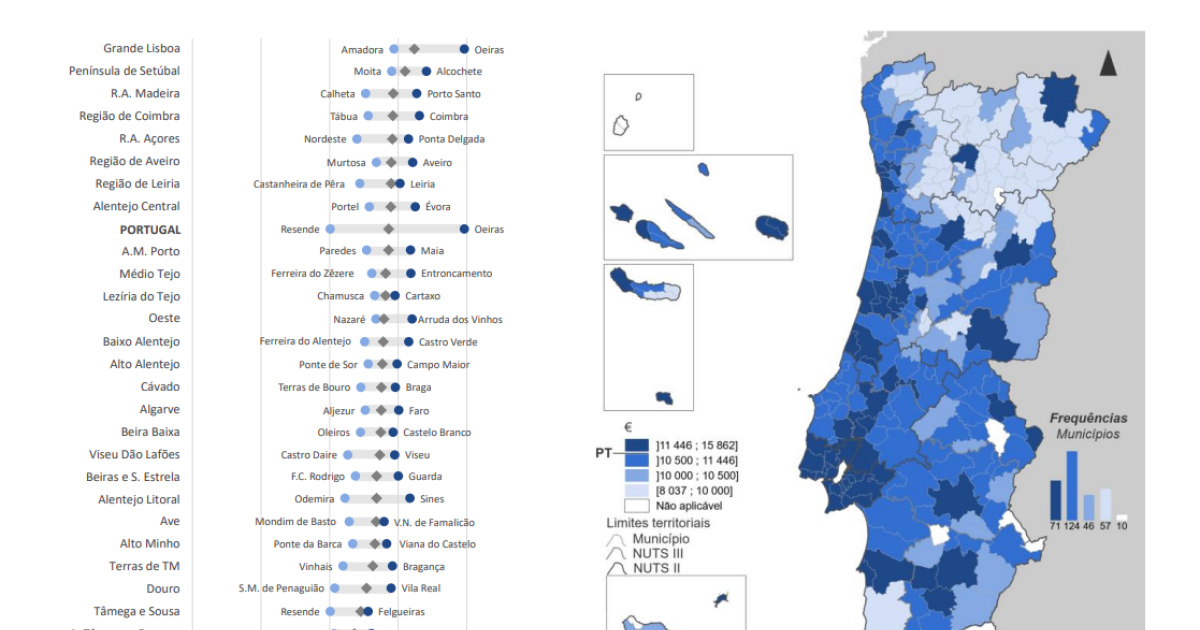New Data Shows Rising Median Income in Portugal Marked by Significant Geographic Disparity
Official statistics for the 2023 tax year indicate that the median net income declared by Portuguese residents reached €11,446 annually, a 7.2% increase from 2022. This finding points to a nationwide growth in earnings. The data, released by government sources, provides a detailed municipal breakdown of income levels and distribution across the country. The analysis was based on declared income after the deduction of the personal income tax (IRS), offering a clear view of household purchasing power.
The geographic breakdown of the data reveals a concentration of wealth in specific areas, particularly within the Lisbon metropolitan region. A total of 71 municipalities exceeded the national median income. The municipality of Oeiras reported the highest median income in the country at €15,862, followed by Lisbon with €14,282 and Alcochete with €13,654. Other municipalities with high median incomes included Cascais, Coimbra, and Porto Santo, all surpassing the €13,000 mark. This highlights a clear economic divide between these prosperous coastal and urban centers and other parts of the country.
The trend of income growth was observed across most of the territory, with 197 out of 298 municipalities showing an acceleration in the annual growth of median income. In 137 of these municipalities, the rate of increase was above the national average. The only municipality that did not register an increase was Odemira. This widespread growth suggests a generally positive economic momentum, though the scale of this growth varies significantly from one region to another, affecting local market conditions for housing and services.
Need Expert Guidance?
Get personalized insights from verified real estate professionals, lawyers, architects, and more.
Despite the positive income growth, the data also points to persistent and high levels of inequality. The national Gini coefficient, which measures income distribution, was 35.5% in 2023, showing a slight improvement. However, 31 municipalities recorded inequality levels higher than the national average. The most significant asymmetries were found in Lisbon (42.6%), Vila do Porto (42.5%), Porto (41.8%), and Cascais (40.2%). These figures indicate that in the country's wealthiest urban centers, the gap between the highest and lowest earners is also the most pronounced. In contrast, 210 municipalities saw an improvement in their income distribution, with Lagoa in the Azores registering the largest reduction in inequality in the country, falling by 2.5 percentage points.
Stay informed on Lisbon property market developments at realestate-lisbon.com.






